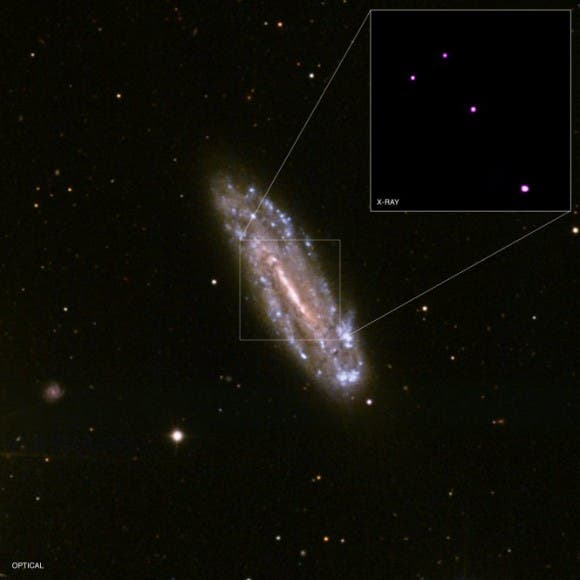Though this might sound like an oxymoron, this is possible the best term to describe one of the most interesting recent astronomical finds – the lowest mass supermassive black hole discovered so far. The black hole was detected at the center of a late-spiral galaxy, which astronomers at the Chandra X-Ray Observatory initially believed it shouldn’t had been able to harbor one in the first place, and suggests it has a different origin from that of its more hefty cousins.

Located about 55 million light years from Earth, NGC 4178 is a spiral galaxy that doesn’t have a bright central concentration, or bulge of stars in its center. This lead scientists to believe that it shouldn’t have a black hole at its center, like is the case for most galaxies, however X-ray analysis provided by Chandra’s X-Ray vision, as well as infrared data the NASA’s Spitzer Space Telescope and radio data from the Very Large Array, revealed a faint X-ray source beeping from the galaxy’s center. Based on the amount of X-rays at different wavelengths, as well as its brightness at infrared wavelengths, the astronomers found that a black hole must be resting at the center of NGC 4178, rapidly pulling in material from its surrounding.
Using a known relation which factors the mass of a black hole and the amount of X-rays and radio waves it generates, scientists were able to estimate a mass of 200,000 times that of our sun. That may seem like a lot, but typical supermassive black holes are in the range of millions or even billions times more massive than our sun. In fact, the black hole at the center of NGC 4178 is the lowest mass supermassive black holes ever observed, although astronomers admit this is probably near the extreme low-mass end of being in the “supermassive” range.
Previous astronomical research saw a close correlation between the mass of a supermassive black hole and the mass of the bulge of its host galaxy. This lead to the popular belief that galaxies without bulges are unlikely to host supermassive black holes. This recent find counters this prediction, suggesting that the mechanisms of supermassive black hole formation are far from being completely identified.
Findings were published in The Astrophysical Journal.






